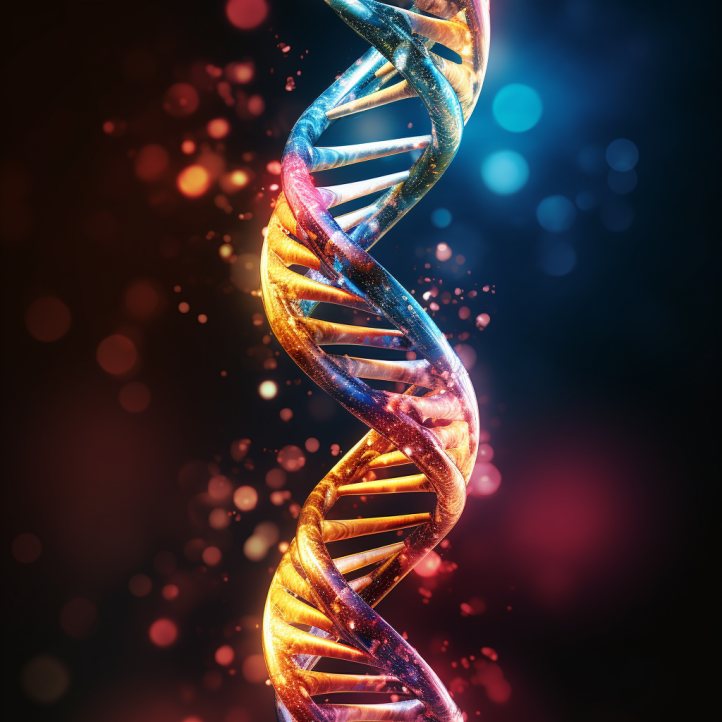Humans and other complex organisms face a constant barrage of new harmful genetic mutations, yet somehow manage to persist and evolve despite this mutational load.
New research reveals how populations can survive this onslaught through a delicate balancing act between bad and good mutations.
Key Facts:
- Each person inherits around 2-10 new harmful mutations from their parents
- Natural selection cannot keep pace with removing all these bad mutations
- A smaller number of beneficial mutations with larger positive effects can compensate
- This adaptation comes at a cost – slower evolution and high variation in fitness
The Genetic Tsunami
When we reproduce, our cells must copy vast genomes with over 3 billion DNA base pairs.
This monumental process is surprisingly error-prone, with each new human inheriting on average 2-10 new harmful mutations not present in their parents.
While cells have repair mechanisms to fix DNA damage, enough mutations slip through to present an existential threat.
How can populations persist when bombarded with so many detrimental genetic changes?
This flood of harmful mutations is like a one-way ratchet, grinding fitness down over time.
Natural selection works tirelessly to remove detrimental changes from the population.
However, when the rate of new harmful mutations is greater than one per person, selection cannot keep pace.
Slightly deleterious mutations inevitably sneak through the selective filter and accumulate over generations.
Famed population geneticist Motoo Kimura called this inexorable accumulation of bad mutations “Ohta’s ratchet”, after Tomoko Ohta, who first described the phenomenon in 1973.
Left unchecked, Ohta’s ratchet would slowly but surely erode population fitness over time, leading to eventual extinction.
Yet somehow, most species manage to stay ahead of the curve.
The Balancing Act: Beneficial Mutations vs. Deleterious
According to new research by population geneticist Joshua Matheson and evolutionary biologist Jevin West, populations can beat Ohta’s ratchet through asymmetrical adaptation.
Although many harmful mutations constantly slip through and accumulate, a smaller number of highly beneficial mutations, each with a larger positive effect, can balance the ledger.
The key insight is that the mutations that natural selection fixes over generations tend to have larger effects than new mutations occurring each generation.
Deleterious fixed mutations are, on average, much milder than novel deleterious mutations.
Meanwhile, beneficial mutations that get fixed are substantially more beneficial than novel beneficial mutations.
This asymmetry allows relatively rare beneficial mutations with mild positive effects to compensate for the fitness lost to frequent slightly deleterious changes.
Although detailed balance is not achieved at individual genes, with bad mutations constantly accumulating, the net fitness flux across the genome remains positive.
Simulating Asymmetrical Adaptation

To demonstrate this balancing act in action, the researchers developed sophisticated computer simulations of evolving populations.
The simulations included realistic human parameters like a population size of 20,000, a genome with 23 chromosomes and 20,000 genes, and per-person mutation rates estimated from human genomic data.
The results confirm that with a sufficiently high rate of beneficial mutations, populations can withstand very high rates of harmful mutations.
Within plausible ranges for beneficial mutation rates and effects in humans, the simulations predict positive fitness flux even while deleterious mutations accumulate indefinitely over generations.
Slowed Adaptation at a Cost
Although populations can avoid mutational meltdown through asymmetrical adaptation, this balancing act comes at a cost.
Simulations show that adaptation to changing environments is 13-39% slower when populations must compensate for high mutation load.
Essentially, populations must dedicate a substantial portion of their adaptive capacity to overcoming fitness losses from an endless barrage of deleterious mutations.
This leaves fewer resources available for adapting to environmental pressures like predators, diseases, and climate change.
High Variance in Genetic Fitness
Another consequence of high mutation load is increased variance in fitness within populations.
When each individual inherits many unique harmful mutations, some individuals will be hit harder than others, creating massive differences in genetic quality.
Simulations show that high per-person mutation rates result in remarkably high variation in fitness, even with beneficial mutations keeping pace.
For example, with 10 harmful mutations per person, the model predicts two randomly chosen humans will differ in fitness by 30-40% on average.
This has profound implications for human health and medicine, since we cannot assume individuals are equal “blank slates” unaffected by genetic load.
A large portion of variation in disease risk and lifespan may stem from differences in mutation load rather than lifestyle or environmental factors.
More Mutations Can Accelerate Adaptation
Concerns have been raised that increases in harmful human mutation rates will dangerously accelerate the erosion of population fitness over time.
For example, older paternal age increases the number of new mutations in offspring.
However, somewhat counterintuitively, the new simulations find that moderately increased mutation rates speed up adaptation on average rather than slow it down.
Since adaptation is more strongly dependent on beneficial mutations than harmed by deleterious ones, higher mutation rates help by increasing the supply of rare beneficial changes.
Implications for Evolution and Medicine
This new understanding of how populations adaptively compensate for relentless mutation load has profound scientific and medical implications.
It helps explain the evolution of complexity at the molecular and organism levels as species find creative adaptations to overcome fitness declines.
It also reveals mutation load as a major source of health inequality within populations, an important confounding factor in medical studies.
While the threat of mutational meltdown may be less acute than feared, the effects of genetic load are pervasive.
Our survival depends on a delicate balance between detrimental and beneficial mutations.
There are always more clouds than silver linings – but so far, just enough bright spots to stay ahead of the storm.
References
- Study: Human deleterious mutation rate implies high fitness variance, with declining mean fitness compensated by rarer beneficial mutations of larger effect
- Authors: Joseph Matheson et al. (2023)







